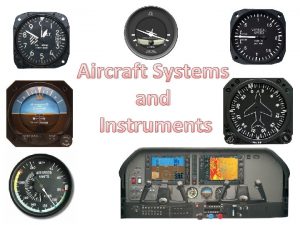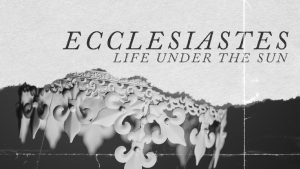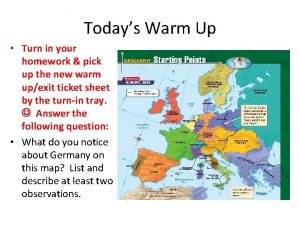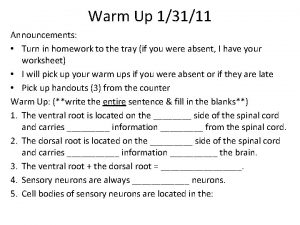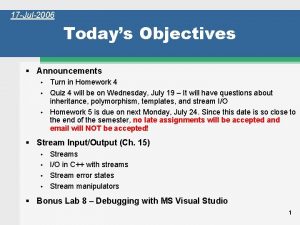Announcements Turn in Homework 5 pick up Homework





























- Slides: 29

Announcements • Turn in Homework 5, pick up Homework 6. • Another test this week! Same days (W, Th), same format as before. • First project due October 13.

Telescopes 2 October 2006

Today: • • • Different telescope designs Why bigger is better Research telescopes, past and present Light detectors Telescopes for invisible “light” and other signals • Amateur telescopes

Purpose of a telescope: Gather light over a large area and focus it onto a small area Method 1: Refraction (using a convex lens) Disadvantages: Hard to make a large lens with two perfect surfaces; hard to support a large lens by edges; different colors are focused at slightly different distances

Purpose of a telescope: Gather light over a large area and focus it onto a small area Method 2: Reflection (using a concave mirror) Disadvantage: Focal point is within the incoming light path.

1 -meter refractor, Yerkes Observatory, Wisconsin 10 -meter reflector (Keck telescope), Mauna Kea, Hawaii

Light-gathering ability 1 meter across 10 meters across A 10 -meter telescope gathers 100 times as much light as a 1 -meter telescope.

Resolving Power (Ability to see detail) Wave behavior of light causes diffraction: bending at the edges of the telescope. The wider the telescope’s lens or mirror, the less diffraction and the more detail can be resolved. Light with a shorter wavelength also diffracts less. But: Air turbulence usually causes even more blurring.

Reflector Designs Diffraction spikes from secondary mirror supports

Early Telescopes Newton’s reflector Galileo’s refractor

The first big reflectors William Herschel’s largest telescope (late 1700’s) Lord Rosse’s telescope (1840’s)

Large Photographic Telescopes 2. 5 meter Hooker telescope, Mt. Wilson, California

Large Photographic Telescopes Prime focus 5 meter Hale telescope, Mt. Palomar, California

Book Recommendation: First Light, by Richard Preston. Describes the “Big Eye” and the other telescopes at Palomar Observatory, as well as the research done there and some of the more interesting researchers.

Light Detectors • Human eye • Photographic emulsions (late 1800’s) • Electronic cameras (1970’s) • Spectrographs (prisms or diffraction gratings) combined with one of the above

Other Wavelengths

Radio Telescopes

Hi. Res Fly’s Eye Cosmic Ray Detector (Utah west desert)

Hubble Space Telescope

Other space telescopes X-ray Infrared

Advantages of space telescopes • Observe wavelengths that don’t penetrate earth’s atmosphere • Sharper images without atmospheric refraction (“twinkling”) Mars from earth’s surface • NASA has lots of money Mars from Hubble

Other signals (besides “light”) • Cosmic rays (charged subatomic particles that collide with earth’s atmosphere) • Neutrinos (highly penetrating particles, given off by sun and other stars) • Gravitational waves (not yet detected directly)

Neutrino Detectors

Gravitational Wave Detectors (LIGO) Hanford, WA Livingston, LA Proposed “LISA” detector in solar orbit

Telescopes for amateur use • • Binoculars Small refractors Dobsonian reflectors Motor-driven telescopes

Binoculars Great for viewing the moon, Jupiter’s moons, Milky Way, and several of the brighter star clusters, nebulae, and galaxies. 7 x 50 (my favorite) Mostly for daytime use Too big to hold steady

Small Refractors OK for viewing moon and planets, IF the mount is steady. Usually a major disappointment. Beware of cheap department store brands! High-magnification eyepieces are useless.

Dobsonian Reflectors These are Newtonian reflectors with a simple mounting system designed by John Dobson. Versatile, economical, and very easy to use! Sizes range from 4. 5 inches to 25 inches and more.

Motor-Driven Telescopes For the serious amateur astronomer/astrophotographer. Rather expensive compared to Dobsonians.
 Up down turn around pick a bale of cotton
Up down turn around pick a bale of cotton What happened when montag crossed the ten-lane highway
What happened when montag crossed the ten-lane highway Pvu official announcement
Pvu official announcement Kluver bucy syndrome
Kluver bucy syndrome /r/announcements
/r/announcements General announcements
General announcements Church announcements
Church announcements Turn hell hound turn
Turn hell hound turn You can't turn right here. you turn left
You can't turn right here. you turn left O valiant cousin, worthy gentleman annotation
O valiant cousin, worthy gentleman annotation Wash your hands put on your nightgown analysis
Wash your hands put on your nightgown analysis Tomato flames
Tomato flames Macbeth seeing banquo's ghost quote
Macbeth seeing banquo's ghost quote Put your right hand in the air
Put your right hand in the air Answer. go straight turn left turn right
Answer. go straight turn left turn right Turn right turn left go straight
Turn right turn left go straight Go straight ahead and turn right
Go straight ahead and turn right Turn the arrow 1/4 turn clockwise
Turn the arrow 1/4 turn clockwise Please turn in your homework
Please turn in your homework Turn in your homework
Turn in your homework Turn in your homework
Turn in your homework Homework oh homework i hate you you stink
Homework oh homework i hate you you stink Homework oh homework i hate you you stink
Homework oh homework i hate you you stink Homework oh homework i hate you you stink
Homework oh homework i hate you you stink Homework oh homework i hate you you stink
Homework oh homework i hate you you stink Jack prelutsky homework oh homework
Jack prelutsky homework oh homework Homework oh homework poem
Homework oh homework poem 20 minutes
20 minutes Underline the descriptive adjective/s in each sentence
Underline the descriptive adjective/s in each sentence Pick master
Pick master











